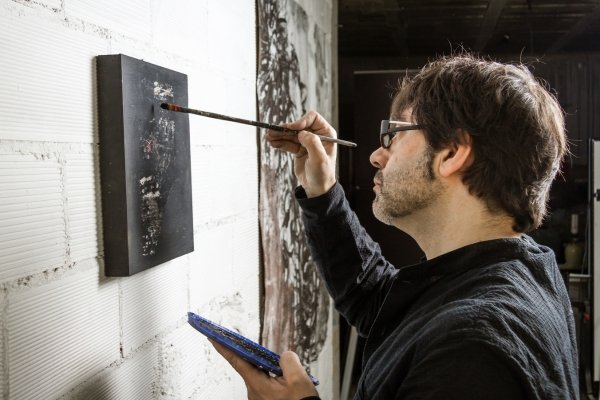Painting your home is a transformative journey that empowers you to create an environment that truly reflects your style and vision. “Transform Your Space: A New Painter’s Roadmap to Success” is a comprehensive guide designed for beginner painters looking to take control of their interiors. This article walks you through every step—from planning and preparation to executing advanced techniques—so you can confidently turn your home into a work of art.
Defining Your Vision and Setting Goals
Every successful painting project starts with a clear vision. Begin by asking yourself what you want your space to feel like. Is it a cozy, relaxed retreat, or a vibrant, energetic environment? Create a mood board with images, fabric samples, and color swatches that inspire you. Define the following:
- Purpose of Each Room: Determine which areas need a complete overhaul and which might benefit from an accent or a simple refresh.
- Mood and Atmosphere: Consider how different colors can influence the emotional tone of a room. Soft blues and greens evoke calmness, while bold reds and oranges can energize the space.
- Design Goals: Sketch a rough layout of your room and pinpoint the features you’d like to emphasize, such as architectural details, focal walls, or decorative trim.
Comprehensive Planning and Budgeting
Once your vision is clear, it’s time to map out your project:
- Space Assessment: Measure your walls and assess their condition. Create a list of all areas needing repair, cleaning, and priming.
- Color Sampling: Visit a local paint store or browse online to select potential colors. Purchase sample pots and apply them to test patches on your walls, evaluating how they change with varying light conditions.
- Budgeting: List all necessary supplies—paints, primers, brushes, rollers, painter’s tape, drop cloths, and any specialty tools. Quality materials are an investment that will result in a more durable, professional finish.
- Timeline: Establish a realistic timeline for your project. Allocate time for preparation, painting, and necessary drying periods to avoid rushed work that could lead to mistakes.
Preparing the Surfaces
A well-prepared surface is the key to a lasting, flawless finish. Follow these steps:
- Cleaning: Thoroughly clean your walls to remove dust, grease, and residues from previous finishes. Use a mild detergent and water solution, then allow the surface to dry completely.
- Repairs: Inspect the walls for any imperfections such as holes, cracks, or flaking paint. Use spackle or filler to repair damage, then sand down the areas to ensure a smooth, even surface.
- Priming: Apply a high-quality primer to seal the surface. This step is crucial when transitioning from dark to light colors or when working on patched areas. A good primer improves adhesion and ensures that your final color appears vibrant and uniform.
Tools and Techniques for Success
Equipping yourself with the right tools and mastering essential techniques is vital for achieving a professional finish:
- Brushes and Rollers: Invest in a variety of brushes—angled brushes are perfect for “cutting in” along edges and corners, while high-quality rollers with the appropriate nap length ensure smooth coverage over larger areas.
- Painter’s Tape: Use painter’s tape to mask off areas that you do not wish to paint, such as window frames, trim, and baseboards. Removing the tape while the paint is slightly wet helps maintain crisp lines.
- Application Techniques: Employ the “W” or “M” rolling method to distribute paint evenly across walls. This method minimizes streaks and roller marks. For detailed areas, use smaller brushes and consider techniques like dry brushing or stippling to add texture.
- Layering: Instead of applying one thick coat, opt for several thin layers. This reduces the risk of drips and ensures a more durable and evenly saturated finish.
Innovative Techniques to Elevate Your Space
Once you’re comfortable with the basics, consider integrating creative techniques:
- Accent Walls: Choose one wall to highlight with a contrasting or bold color. An accent wall can serve as a focal point and add depth to your interior design.
- Textured Finishes: Experiment with sponging, rag rolling, or even dry brushing to create subtle textures that add visual interest and dimension to your space.
- Ombre and Gradient Effects: Gradually blend two or more colors for a modern, ombre effect. This technique works well in large areas or as a creative feature on accent walls.
- Stenciling: Incorporate stencils to add patterns or motifs that reflect your personal style. This approach can transform a simple wall into an artistic canvas without requiring advanced freehand skills.
Managing Challenges and Fine-Tuning Your Process
Every project, especially for first-time painters, can present challenges. Here are some tips to ensure success:
- Patience and Persistence: Allow each coat to dry fully before applying the next. Rushing the process may lead to uneven results or imperfections.
- Consistent Technique: Keep your hand steady during detailed work. If mistakes occur, a light sanding and a careful touch-up can often correct the issue without the need to start over.
- Environmental Considerations: Ensure good ventilation and proper lighting during the project. This not only facilitates a more even drying process but also helps in accurately assessing the color and texture of your paint.
- Learning from Feedback: Don’t hesitate to seek feedback from experienced painters or online communities. Constructive criticism can guide you in refining your techniques and boosting your confidence.
Final Thoughts
“Transform Your Space: A New Painter’s Roadmap to Success” is more than a step-by-step guide—it’s an invitation to explore your creativity and unlock the full potential of your home’s interior. With careful planning, detailed preparation, and a willingness to experiment, even the most novice painter can achieve results that rival professional work. Every brushstroke brings you closer to a home that is uniquely yours, reflecting your personal style and creative spirit. Embrace the journey, enjoy the learning process, and let your home become a vibrant canvas that tells your story.


